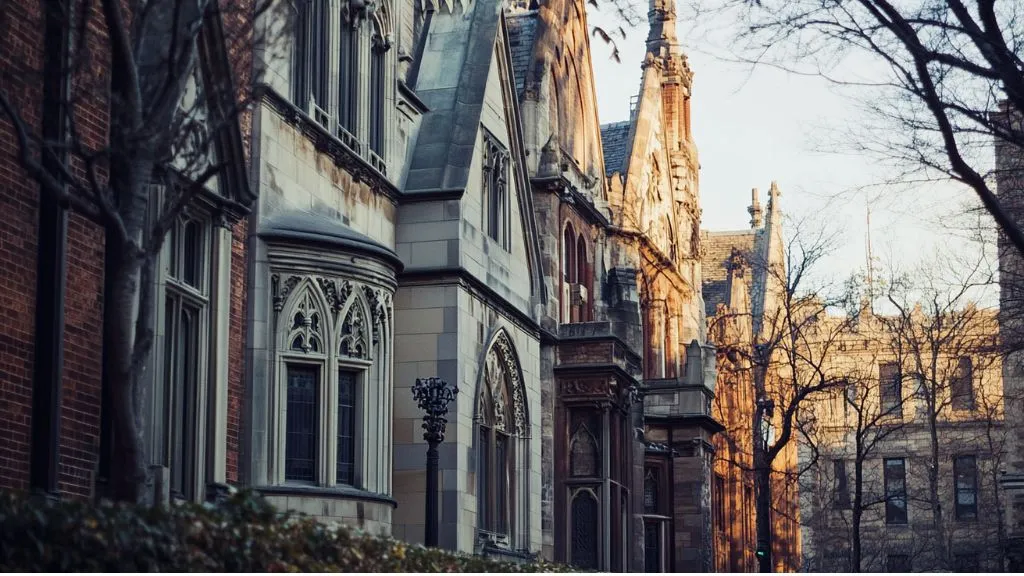
Have you ever gazed upon soaring sinister buildings with pointed arches, flying buttresses, and thought, “Wow, this place looks straight out of a medieval fantasy novel”? You’ve just come to know Gothic style architecture! But relax, it is not all dark and gloomy just like that term sounds. In fact, Gothic structures are some of the most breathtaking art and engineering you will see at all.
So let us understand what Gothic architecture is all about, where it came from, and how it evolved into the form of Gothic revival architecture, which we still keep admiring today.
So, What Is Gothic Architecture?

First off, Gothic architecture is in the name: Gothic architecture originates in France around the 12th century and dominates the architecture scene until the 16th century. The buildings of Gothic architecture were the skyscrapers of their time, reaching for the heavens (literally), with steeples, stained-glass windows depicting scenes from the bible, and incredible stone-carving details that could mesmerize and capture the imagination for hours on end.
Contrary to the Romanesque style, with its heavy and bulky forms, the Gothic style of architecture renounced all excess weight and aspired instead to make radical lifts. Imagine that heavy winter boots have been traded in for sleek, elegant stilettos (but for buildings).
The Origins: Born in France, Loved Worldwide
With one of the earliest examples being the Basilica of Saint-Denis, the Gothic architecture took a bold stride out of the Île-de-France region in France. At that time, the architects were experimenting with new methods to create taller, brighter spaces that felt less dungeon-like and more divine. The key was a pointed arch that was not only fashionable but also very functional!
From there on, the style spread rapidly throughout Europe, into cathedrals, churches, castles, and even into universities. Soon enough, Gothic structures became the jewels of any city, with the likes of Notre-Dame de Paris and Chartres Cathedral standing tall as feats of human endeavor.
Gothic Architecture Characteristics: Spot the Signs!
Want to impress your friends on your next trip to Europe? Master the following features of Gothic architecture, and you will be the tour leader everyone wants to listen to. Before that, you will probably be listening to your friends as you will speak Gothic architecture with the best of them.
- Pointed Arches: The defining appearance. It looks more graceful and is structurally stronger than the rounded one.
- Flying buttresses: These came to spice up Gothic-looking buildings with high ambitions, with their external supports seemingly lifted from an engineering textbook.
- Ribbed Vaults: Crisscrossing ceiling supports that provide some additional dramatic high lighting.
- Stained Glass Windows: Storytelling through art, these painted windows pour light and beauty into otherwise darkened interiors.
- Gargoyles: Some were shaded, yet much out-there magnificent- these stone folk were said to act as water spouts and keep evil spirits at bay (or so they claim).
Next time you see one of these things on a building, you’ll know that you’re looking at an excellent Gothic architecture building!
Gothic Revival Architecture: A Comeback Story
The thought was that Gothic architectural style had become a memory until its return in glory in the 18th and 19th centuries. Enter Gothic revival architecture, a movement that brought medieval charm back to modernity.
This revival was not merely a cathedral focus; it was an all embracing style in houses, public buildings, and even train stations. The Palace of Westminster in London (hello there, Big Ben!) is a famous example. Architects and designers of this time became enamored with the romance and drama of Gothic structures, working to give them a contemporary spin.
In many ways, Gothic revival architecture stood for how good style never goes out of fashion; it simply waits for its moment of glory!
The Evolution: From Ancient Stones to Modern Inspiration
While Gothic style architecture came to a close sometime in the 16th century, its spirit lingers on. Today, architects carry their splendor in their hearts. Some contemporary churches, museums, and perhaps even homes allude to this timeless style through pointed arches or dramatic vaulting.
And of course, in addition to architecture, Gothic captures the imagination of fashion, films (anyone say Dracula?), and general pop culture themes. It’s an expression that Gothic architecture isn’t merely about old stones, it’s about the stories that survive for hundreds of years.
Wrapping It Up
The very term Gothic revival architecture conjures up images of starkly bold, even beautiful, and very ambitious architecture, allowing for splendorous grandeur, maximum light and height, and some element of drama in the medieval world. From sky-high cathedrals to picturesque revival buildings, the world of Gothic architecture still stirs our imagination. So the next time you find yourself walking past one of these grand edifices, honor it with a little bow; it is a building that took centuries to achieve!






